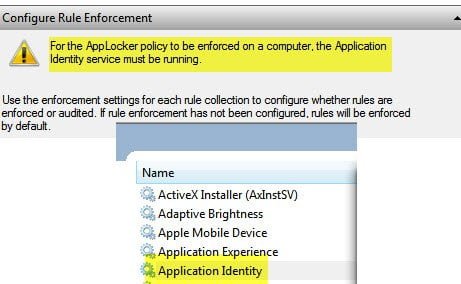

The original and best website and internet blocker - Freedom blocks.Microsoft has developed a tool for automatically creating a default set of rules for AppLocker. AppLocker is mostly aimed towards low-privileged users, whereas Windows Defender Application Control is mostly aimed towards the Operating System itself.Easily block websites and apps on your computer, phone, and tablet with Freedom. I have realized after a bit of trouble shooting, just enabling Applocker to deny executables (even though there are no 'deny' rules, all changed to 'allow' currently) I get the 'This app has been blocked by your system administrator' when trying to open a Windows 10 App, the Store and nothing happens if I click on the start AppLocker is the easiest to configure, design and deploy however, it’s possible for local administrators to bypass and disable this application whitelisting. We are unable to investigate this issue further without the additional information.Trying to apply a GPO under Applocker to block somethings.
Microsoft is presenting a lot of new features to WDAC and continuously expanding the capabilities.WDAC policies apply to the managed computer as a whole and affect all users of the device. \AccessChk.exeSet-ExecutionPolicy -ExecutionPolicy Bypass -Scope Process -ForceThe script will automatically download AaronLocker and AccessChk (Sysinterals) and create a default set of AppLocker rules that can be deployed using Group Policy Objects.Windows Defender Application Control (WDAC)Windows Defender Application Control (WDAC) is a newer and much more secure solution for Application Whitelisting however, it is not as easy to configure, design and deploy as AppLocker is. \AccessChk\accesschk64.exe. \AccessChk.zip -UseBasicParsingCopy-Item. \AaronLocker\AaronLocker-master\AaronLockerInvoke-WebRequest -OutFile. \AaronLocker.zip -UseBasicParsingSet-Location.

Applocker Not Blocking Update The WDAC
Only supported on Windand aboveWe'll extend these rules in our final WDAC policy, as we need to enable Audit Mode and other options enabled before we're ready to enforce.Let's start with setting up the WDAC environment and copy this default ruleset to our folder.Copy-Item C:\Windows\schemas\CodeIntegrity\ExamplePolicies\AllowMicrosoft.xml $WDACFolderNow navigate to the Microsoft Recommended Block Rules and copy the XML ruleset, paste the rules to a notepad (or any text editor) and go to line 798 and remove the 3 highlighted deny rules:Do not delete the rules, if you're using a Windows 10 version below 1903. I've installed a WindEnterprise, to ensure that the latest and greatest features of WDAC are supported.Run PowerShell or PowerShell ISE as Administrator to get started.If we take a look at C:\Windows\schemas\CodeIntegrity\ExamplePolicies we see that Microsoft has placed some example policies for us to get started with WDAC.In the section we see the following rule options enabled:We'll get back to this one - Basically allows us to deploy WDAC policies which have not been signed with a Code Signing certificateEnables us to restrict user-mode binaries alongside kernel-mode binariesThis option is reserved for future use according to MicrosoftAllows us to update the WDAC policy without requiring a reboot. This computer should be running Windows 10 and should have any required enterprise application installed. Link to block rules: Like with AppLocker we need a reference computer.

NET applications and DLLs - Only supported only Windand aboveSet-RuleOption -FilePath. Run the following code to add:2 - WHQL - Requires any driver executes to be WHQL signed19 - Dynamic Code Security - Enables policy enforcement for. Enforce Store Applications has been added as well, this rule will apply WDAC rules to Universal Windows applications.We do still need to add a few rules. Audit Mode is definitely a feature we need since this policy has to be audited before deploying with enforce. If this is the case, and the application is not signed, I recommend using the Fallback switch with hash and these PAW boxes usually are stand-alone and not even able to pull update from a management server because of network restrictions.Our scan is now complete and we're ready to merge our policies.We still have the original rules, but Audit mode and Enforce Store Applications have been added. You could use the Fallback switch 'FilePath' and end up with something like the picture below, but use with care!For a somewhat static machine as a PAW, I would only allow Microsoft application, however, I have encountered environments where a third party application is a hard requirement on this PAW.
\MergedCIPolicies.xml `-BinaryFilePath. \MergedCIPolicies.xml -Version "11.0.0.0"ConvertFrom-CIPolicy -XmlFilePath. \MergedCIPolicies.xml -Option 19This version is 10.0.0.0 so lets bump it to 11.0.0.0, convert our policy to a BIN file and deploy it locallySet-CIPolicyVersion -FilePath.


 0 kommentar(er)
0 kommentar(er)
